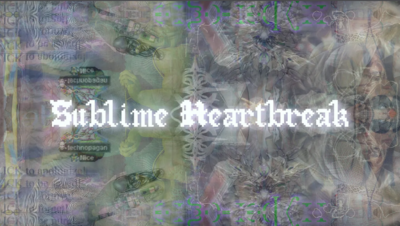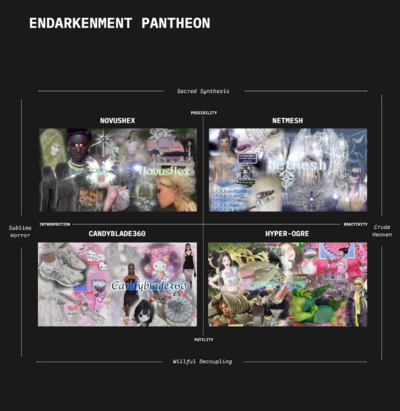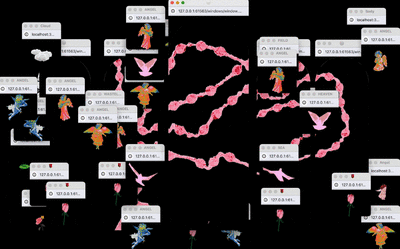[009]
Glitch Poetics
Individual
critical
Glitches are errors where the digital bursts or creeps into our everyday lives as fragmented image, garbled text and aberrant event. Today, when computational technology is integrated ever more closely into bodies and social structures, glitches are considered by artists and companies alike as critical and commercial opportunities, revealing tears in the real-virtual binary. Glitch has also increasingly become a metaphor for understanding the political and ecological shocks the world pushes into the mediasphere each day. In Glitch Poetics Nathan Jones shows how contemporary writers and artists are integrating the glitch as a literary effect, an affective critique and a realist reflection, at a time characterised by breakage, corruption and crisis.
Based on a range of close readings of contemporary literature by writers including Linda Stupart, Sam Riviere, Keston Sutherland, Ben Lerner, Caroline Bergvall, Erica Scourti, David Peace and the internet novelists, and drawing on theories of error, shock, glitch, critical posthumanism and code, Jones lays the groundwork for writing that can productively engage in the new situation for literature in the context of AI, the Anthropocene and the post-digital age. His book articulates the working of error in literary and media practice at the horizon of human and machine language.
“Glitch Poetics resists technofuturism, reinventing errancy as a necessary aesthetic value of (and crucially against) our time.”
01.01.26
[011]
Our aesthetic categories: Zany, Cute, Interesting
Individual
philosophy
The zany, the cute, and the interesting saturate postmodern culture. They dominate the look of its art and commodities as well as our discourse about the ambivalent feelings these objects often inspire. In this radiant study, Sianne Ngai offers a theory of the aesthetic categories that most people use to process the hypercommodified, mass-mediated, performance-driven world of late capitalism, treating them with the same seriousness philosophers have reserved for analysis of the beautiful and the sublime.
Ngai explores how each of these aesthetic categories expresses conflicting feelings that connect to the ways in which postmodern subjects work, exchange, and consume. As a style of performing that takes the form of affective labor, the zany is bound up with production and engages our playfulness and our sense of desperation. The interesting is tied to the circulation of discourse and inspires interest but also boredom. The cute's involvement with consumption brings out feelings of tenderness and aggression simultaneously. At the deepest level, Ngai argues, these equivocal categories are about our complex relationship to performing, information, and commodities.
Through readings of Adorno, Schlegel, and Nietzsche alongside cultural artifacts ranging from Bob Perelman's poetry to Ed Ruscha's photography books to the situation comedy of Lucille Ball, Ngai shows how these everyday aesthetic categories also provide traction to classic problems in aesthetic theory. The zany, cute, and interesting are not postmodernity's only meaningful aesthetic categories, Ngai argues, but the ones best suited for grasping the radical transformation of aesthetic experience and discourse under its conditions.
01.01.26
[026]
“Trust Us, We’re You”: Aspirational Realness in the Digital Communication of Contemporary Fashion and Beauty Brands
Individual
critical
In recent years, a number of fashion and beauty brands have developed promotional content that circulates an aspirational quality imbued with unstudied “cool” around their product. Despite the appeal of this conceit to tropes of the everyday, authenticity, and belonging, it presents a superficially relatable ideal whilst exploiting digital media’s capacities to foster intimacy and promote a postfeminist subjectivity based on consumption.
This article examines three brands that circulate “aspirational realness” around their product: Glossier, Reformation, and Maryam Nassir Zadeh. All remediate the conventions of prior fashion media to communicate discourses of neoliberal femininity to a media-savvy consumer. Aspirational realness is thus read as a means by which consumption is both encouraged and situated as a means of self-realization in the likeness of other aspirational “cool girls.”
01.01.26
[044]
Transactional Aesthetics
Individual
pedagogy
da Falck Øien explores the emotional relationships humans have with their garments and how acquisition methods influence these relationships. The research, conducted from 2017 to 2021, involves ethnographic studies, collaboration with a fashion label, public engagement through a physical space, and the creation of publications and products. Øien aims to address the environmental impact of the fashion industry by rethinking resource use and consumer behavior, emphasizing fashion as a cultural and social phenomenon beyond mere clothing items.
01.01.26
[047]
Sublime Heartbreak: Vectors for an Ending of Times
Individual
Speculative

Image by Elizabeth Gabrielle Lee

Endarkenment pantheon and its vectors: Possibility ⟷ Futility, Introspection ⟷ Reactivity. The intersection of these vectors (aka quadrants) give rise to aesthetic guilds. Image by Elizabeth Gabrielle Lee
This essay explores the concept of "Endarkenment," an aesthetic response to current global crises. Instead of apocalyptic destruction, Endarkenment finds beauty in chaos and decay. It contrasts traditional enlightenment, emphasizing engagement with darkness and complexity. Four aesthetic "guilds"—NovusHex, Netmesh, Candyblade360, and Hyper-ogre—illustrate different aspects of this concept, embracing both technological and primitive elements to find new forms of meaning and enchantment amid widespread despair and systemic failures.
The essay's concept of "Endarkenment" connects to how we experience fashion online by highlighting emerging digital aesthetics and trends that embrace chaos, complexity, and non-traditional beauty. Online fashion communities reflect this through styles like "indiesleaze" and "ratgirlsummer," which celebrate raw, unpolished looks, and "technomysticism" that merges spirituality with cybernetics. Platforms like Instagram curate these trends, showcasing designs that fuse nature with technology or embrace hyper-femininity and grotesque, anti-minimalist aesthetics. These digital movements redefine fashion by rejecting conventional norms and finding beauty in unconventional, dark, and chaotic expressions.
“I propose Endarkenment, an aesthetic posturing that’s emerging from the abyss of ultimate system failures and chronic mass despair. I’m not interested in a doomsday, pure-nihilistic dystopian narrative.”
01.01.26
[063]
Embodying the browser
Collaboration
experimental

Chia Amisola, Himala, 2024, hypertext website. Courtesy of the artist.
An interview between Meg Miller and Chia Amisola on the development of her practice; from creating browser based environments to translating them into physical performances of the 'ambient internet'. Chia and Meg delve into the concept of embodying the browser as a personal and performative space, transforming websites into lived, immersive experiences. They explore how reading becomes a creative act, akin to authorship, and examines how writing can exist fluidly within data structures, blending code and narrative. With themes of ritual, religion, and repetition, Amisola sees the internet as a potent tool for activism and cultural expression, wielding it as a platform to advance the Filipino struggle and amplify underrepresented voices in the digital age.
I’m interested in reconfiguring our attention to the web: What is visible, invisible, foregrounded? How does poetry emerge from the landscape of the browser?
In this conversation, Amisola explores the agency inherent in 'embodying' technology, where her poetic, chaotic and calming performances reveal how online spaces can become canvases for self-creation, transformation and sharing. Her work in Internet art performance highlights the potential of digital spaces as extensions of (cultural) identity.
Amisola's approach to digital embodiment can critically inform how we view fashion as a social system in online spaces. By 'authoring' identity - through online fashion, words or images - the digital self can become both publisher and platform, forever shifting, growing, shrinking as an evolving interface.
“If Ursula K. Le Guin described technology as the “active human interface with the material world,” I also attempt to become a technology myself.”
01.01.26
[066]
Moodbored
Individual
critical
Olivia Linnea Rogers explores the rise of digital mood boarding as a modern form of identity exploration and creative expression. Originally physical collages, mood boards have evolved online, becoming aspirational but intangible collections of lifestyle aesthetics. It reflects on how images once rare and precious are now curated endlessly on platforms like Pinterest, shaping identity through associations with unattainable ideals. Rogers suggests mood boarding reflects consumerism, escapism, and a desire for curated self-expression, raising questions about authenticity in digital self-construction.
“There is no place for self-actualisation like the Internet. To put on and take off identities, personalities, interests, and styles with no cost at all and by simply lifting a pointer finger. This has generally been considered an advantage of the Internet. I’d argue it is not. It feeds an instinct that has been trained in us from marketing executives. You can create a “self” and a “space” for that self, with none of it being real at all.”
01.01.26
[074]
Your Internet Browser Does Not Belong to You
Individual
critical
In the The WIRED article Showler explores how browsers not only serve as gateways to the internet but also influence the way we think, act, and are surveilled online. It examines how features like tabs and private search, initially intended to enhance user experience, reflect and shape our fractured attention spans and desire for privacy. However, the browser’s underlying mechanics, such as tracking and personalized responses to user behavior, expose the tension between browsing as a free, casual act and its deep ties to commercial and surveillance interests. Ultimately, it argues that browsers subtly dictate how we interact with digital spaces, challenging notions of neutrality and autonomy in online environments.
“To use a browser is, directly or indirectly, to participate in commerce. No act of browsing is ever really idle.”
01.01.26
[087]
Creating Feminist Paths with Mood Boards
Individual
pedagogy
In Creating Feminist Paths with Mood Boards, Floriane Fo Misslin opens up a path toward an intersectional feminist citational practice for visual references. The essay rethinks mood boards—often dismissed as simple inspiration tools—as sites for thoughtful and politically engaged feminist work. Misslin shows how they can map connections, surface overlooked voices, and challenge dominant narratives in design and education. Through intentional curation, mood boards become spaces for reflection, citation, and imagination—offering ways to practice solidarity, build collective knowledge, and foster more inclusive and critical modes of working, especially in creative and pedagogical contexts.
Misslin’s feminist expansion of the mood board as a citational tool is a much-needed intervention in fashion, where visual referencing often goes unacknowledged or uncredited. The work draws urgent attention to how inspiration circulates—and how it might be redirected toward more ethical, inclusive, and reflexive practices. In a field that frequently celebrates aesthetics without interrogating power, this approach offers a critical perspective on citation as both visual and political. It urges fashion practitioners to trace their influences with care and to reimagine how knowledge is shared.
“Where does authorship begin? Is a bibliography—or a set of visual references—intellectual property?”
01.01.26
[091]
Beauty, Authorship, and AI: A Conversation with Gil Anselmi
Collaboration
critical
A conversation between photographer Gil Anselmi and Studio Halia’s Melisa Yalcinkaya tracing the creative, ethical, and aesthetic stakes of working with AI. Anselmi reflects on using AI not as shortcut but as medium—training models on his own work to retain authorship and blur the lines between tool and technique.
The interview moves between critique and curiosity: raising questions around beauty standards, authorship, and the homogenising pull of AI-generated aesthetics. Anselmi approaches AI as both collaborator and constraint—highlighting the labour behind prompts, the ecological impact of image generation, and the ongoing tension between intuition and automation.
“I see working with AI as being in conversation with the software.”
01.01.26


